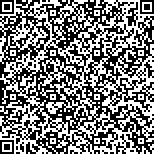|
| 引用本文: | 周露洪,谷孝鸿,曾庆飞,毛志刚,孙明波,高华梅.江苏省固城湖围垦区池塘河蟹生态养殖效益及污染输出分析.湖泊科学,2013,25(3):406-413. DOI:10.18307/2013.0315 |
| ZHOU Luhong,GU Xiaohong,ZENG Qingfei,MAO Zhigang,SUN Mingbo,GAO Huamei.Ecological culture effects of Eriocheir sinesis and the pollutant export in reclamation areas of Lake Gucheng,Jiangsu Province. J. Lake Sci.2013,25(3):406-413. DOI:10.18307/2013.0315 |
|
| |
|
|
| 本文已被:浏览 7882次 下载 4597次 |

码上扫一扫! |
|
|
| 江苏省固城湖围垦区池塘河蟹生态养殖效益及污染输出分析 |
|
周露洪1,2, 谷孝鸿1, 曾庆飞1, 毛志刚1, 孙明波1,2, 高华梅3
|
|
1.中国科学院南京地理与湖泊研究所湖泊与环境国家重点实验室, 南京 210008;2.中国科学院大学, 北京 100049;3.南京市水产科学研究所, 南京 210017
|
|
| 摘要: |
| 选择江苏省固城湖围垦区典型河蟹养殖池塘为研究对象,跟踪研究养殖周期内不同养殖管理方式下的养殖效益及污染负荷通量,结果表明:固城湖围垦区河蟹生态养殖模式具有较高的经济效益,不同养殖池塘因投饵等管理方式不同其效益差别明显.河蟹养殖盈利最高10.5万元/hm2,亏损最高2.4万元/hm2,平均投入为6.3万元/hm2,其中饵料为最主要的养殖投入,占总投入的41.6%,平均产出为10.3万元/hm2.河蟹养殖会造成池塘氮、磷营养盐的累积,不同养殖池塘氮、磷污染负荷差异显著,平均总氮负荷为268.5 kg/hm2、总磷负荷为64.5 kg/hm2.饵料在池塘氮、磷输入上占比最高,分别为70%和90%;池塘水产品和排水输出只带走少量的氮、磷,主要以水草收割途径输出,分别占总输出的86%和88%.优化饵料结构、完善投饵体系和加强收割水草的有效转化是提高养殖效益、减少污染物输出和保护固城湖水环境的关键. |
| 关键词: 固城湖 河蟹 生态养殖 污染输出 |
| DOI:10.18307/2013.0315 |
| 分类号: |
| 基金项目:江苏省自然科学基金重点项目(BK2010096);环保部环保公益项目科研专项项目(2010467014);江苏省水产三项工程项目(PJ2011-55);中国科学院院地合作项目(Y1YD11031)联合资助 |
|
| Ecological culture effects of Eriocheir sinesis and the pollutant export in reclamation areas of Lake Gucheng,Jiangsu Province |
|
ZHOU Luhong1,2, GU Xiaohong1, ZENG Qingfei1, MAO Zhigang1, SUN Mingbo1,2, GAO Huamei3
|
|
1.State Key Laboratory of Lake Science and Environment, Nanjing Institute of Geography and Limnology, Chinese Academy of Sciences, Nanjing 210008, P.R.China;2.University of Chinese Academy of Sciences, Beijing 100049, P.R.China;3.Nanjing Institute of Aquatic Sciences, Nanjing 210017, P.R.China
|
| Abstract: |
| The tracking study of raising crabs during production period in the reclamation areas of Lake Gucheng was carried out in order to find out the economical benefits and pollution influx of different management modes.The results demonstrated that the crab eco-culture in the reclamation areas had a positive effect on the economical benefits.The profits,which could be affected by differences in the aquaculture management,ranged from ¥24000 to ¥105000 Yuan RMB per hectare.The major input was feed, which took up 41.6% of the total input of ¥63000 Yuan RMB per hectare.The total output was ¥103000 Yuan RMB per hectare.The concentrations of nitrogen (N) and phosphorus (P) varied significantly among different ponds,with a total N load of 268.5 kg/ha and total P load of 64.5 kg/ha.Feed made a major contributions in the input of N and P,70% and 90%,respectively;culture products and outflows only took a small amount of N and P loads,and harvesting aquatic plants was the main method to remove N (86%) and P (88%).Consequently,the key to improve the economic benefit,reduce pollution outputs and protect water environment of Lake Gucheng was to optimize the feedstuff structure,perfect the feeding system and strengthen the harvesting of aquatic plants for more effective pollutant transformation. |
| Key words: Lake Gucheng Eriocheir sinesis eco-aquaculture pollutant export |
|
|
|
|